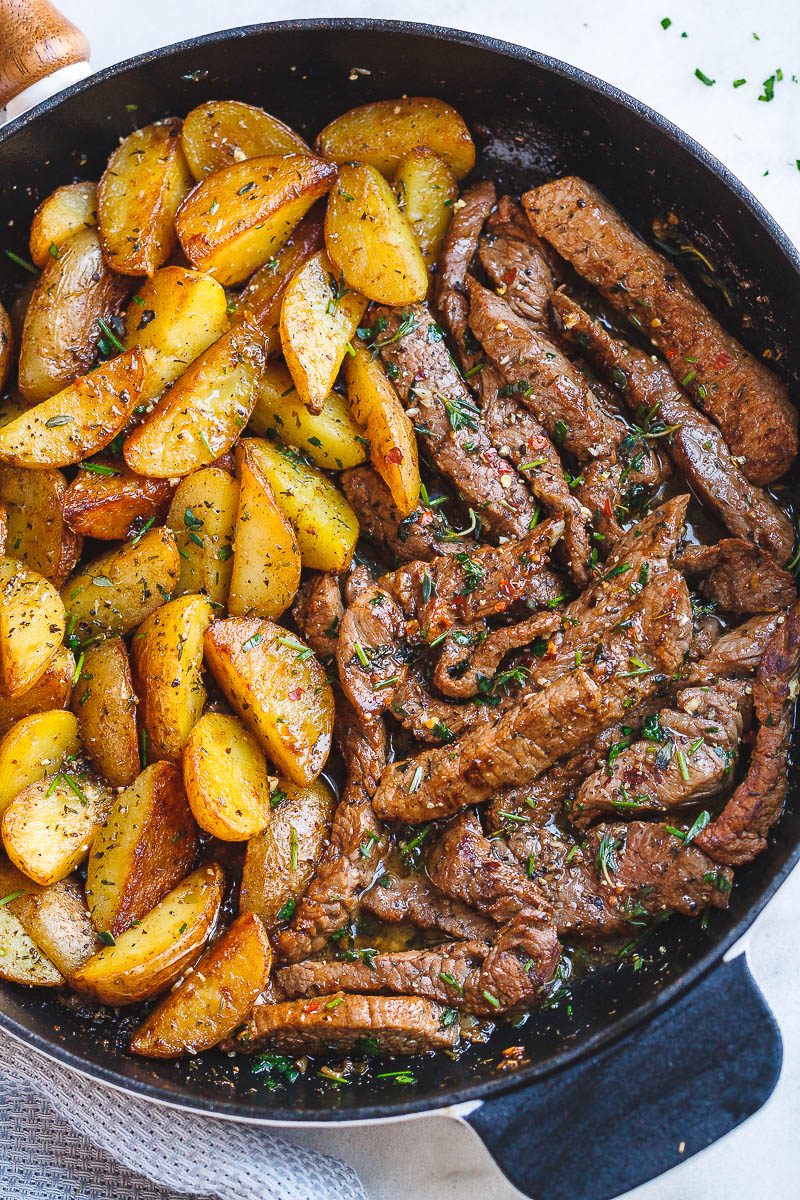Meat Food Preparation Techniques to Perfect Barbecuing, Roasting, and More
Ultimate Guide to Cooking Delicious Meat Cuisines
The art of cooking meat goes beyond simple food; it symbolizes a craft that, when grasped, can raise any eating experience. Understanding vital techniques such as hot, braising, and the choice of proper cuts are essential to attaining ideal taste and texture. Additionally, the critical use of marinates and rubs can significantly enhance the recipe's profile. As we discover various cooking techniques and their special benefits, one have to consider just how each choice forms the final end result. The trip into the nuances of meat prep work is just starting, exposing secrets that can transform your cooking collection.
Necessary Meat Cooking Methods
:max_bytes(150000):strip_icc()/patty-melt-with-charred-scallion-chipotle-mayo-FT-RECIPE0920-8c5e3f5a3a2c4489b2ab1cb90f4bed05.jpg)
While there are countless methods to prepare meat, understanding a couple of vital food preparation techniques can significantly improve both taste and appearance. The art of searing, for example, develops a tasty crust through the Maillard reaction, which adds deepness to the meal. This strategy is ideal applied to cuts of meat with adequate fat web content, enabling a rich taste profile.
One more vital method is braising, which incorporates both completely dry and wet food preparation methods. It involves searing the meat to establish flavor, complied with by slow cooking in liquid. Meat. This method is particularly reliable for harder cuts, as it damages down connective tissues, leading to tender and tasty meat
Barbecuing is yet another vital method, giving a smoky flavor and enticing char. The key is to preserve the best temperature level; too hot can bring about charring, while also cool can trigger the meat to dry out.
Lastly, toasting permits even cooking and caramelization, enhancing the natural flavors of the meat. Each of these methods not only elevates the preference yet also ensures a pleasing appearance, making them essential skills for any type of cooking fanatic.
Selecting the Right Cuts
When it concerns preparing delicious meat recipes, choosing the best cuts is important for achieving optimum taste and tenderness. Various cuts of meat possess special attributes that affect not just the taste yet likewise the structure of the final dish. Recognizing these differences is essential for making notified choices.
For example, tougher cuts such as chuck or brisket gain from sluggish cooking techniques, allowing the connective tissues to damage down, causing a rich, delicious result. On the other hand, tender cuts like filet mignon or ribeye are best matched for fast cooking methods, such as barbecuing or pan-searing, to maintain their juiciness and flavor.
It is additionally essential to think about the source of the meat. Grass-fed or pasture-raised alternatives commonly produce a various taste account compared to grain-fed varieties. Furthermore, marbling-- the intramuscular fat existing in certain cuts-- can dramatically boost the meat's richness and inflammation.
Ultimately, selecting the appropriate cut involves balancing the food preparation approach with the desired taste and structure. By comprehending the features of numerous cuts, you can boost your meat meals and ensure a wonderful culinary experience.
Flavorful Marinades and Rubs
Marinades and rubs are important parts that often enhance the flavor account of meat dishes, changing even the easiest cuts right into cooking delights. This combination not just infuses the meat with flavor however additionally tenderizes it, making it extra pleasurable to eat.
On the various other hand, completely dry massages include a mix of seasonings and natural herbs that are applied directly to the surface area of the meat. This technique develops a savory moved here crust throughout cooking, sealing in wetness and boosting the total preference. Typical ingredients for massages consist of paprika, garlic powder, onion powder, brown sugar, and different dried out natural herbs.
Both marinades and scrubs deal convenience; they can be tailored to have a peek at these guys match different cuisines or personal preferences. Trying out various mixes allows cooks to discover distinct flavor accounts that boost their meat recipes, making them remarkable to those who partake.
Cooking Approaches for Meat
Cooking methods for meat differ widely, affecting not only the texture however also the flavor and overall allure of the recipe. Each technique draws out special characteristics, making it vital to pick the right approach for the particular kind of meat included.
Grilling is a prominent method that imparts a great smoky taste and appealing char to meats. Braising combines both damp and completely dry warmth, typically including scorching the meat followed by slow-moving cooking in liquid, producing tender results for tougher cuts like brisket.
Sautéing, a quick technique making use of a tiny quantity of fat, works for smaller cuts or ground meats, permitting rapid food preparation while retaining dampness. Stewing entails cooking meat slowly in a liquid, improving taste and inflammation, while sous vide provides exact temperature control for flawlessly cooked meat. Each technique has its advantages, and comprehending them is critical for achieving delicious, expertly cooked meat recipes.
Delicious Meat Recipes to Attempt
Enjoying a completely cooked meat meal can raise any dish, and a selection of recipes exist to highlight the one-of-a-kind flavors and appearances of various meats. One standout alternative is the traditional Beef Bourguignon, a French stew that click this link fuses tender beef with red a glass of wine, mushrooms, and fragrant vegetables. Long, sluggish cooking changes the meat into a delicious pleasure.
For chicken lovers, consider Herb-Roasted Chicken. This dish incorporates a whole poultry with fresh natural herbs, garlic, and lemon, leading to crunchy skin and juicy meat. Combine it with seasonal vegetables for a complete meal.
Pork lovers can enjoy a Maple-Glazed Pork Tenderloin. The sweet and tasty glaze caramelizes beautifully, improving the meat's natural taste. Offer it with roasted pleasant potatoes for a well balanced meal.
Conclusion
